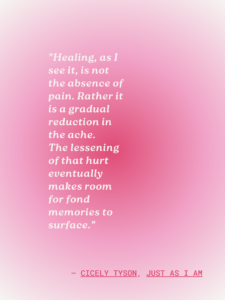
Healing from big T trauma—those overwhelming life events that leave you feeling powerless and profoundly change your sense of safety in the world—is a journey that’s both deeply personal and universally challenging. Whether it’s the aftermath of a natural disaster, the scars of military combat, surviving a violent assault, or any other event that has left you reeling, the path to recovery can seem insurmountable. But with patience, support, and the right steps, healing is possible. Below are essential strategies to help you start on the road to recovery.
Before you can start healing, it’s crucial to understand what big T trauma is and how it differs from the stresses of everyday life. Big T trauma events are extraordinary, not because they happen rarely, but because they overwhelm your ability to cope. They shatter your sense of normality and can leave you feeling isolated, broken, and stuck in a state of hyper-vigilance or numbness.
 Consider, for example, the experience of Alex, a firefighter who survived a catastrophic building collapse but lost several colleagues in the tragedy. Despite his physical recovery, Alex found himself haunted by the event, reliving the moment through intrusive flashbacks and night terrors. Then there’s Jordan, who experienced profound trauma after being involved in a severe car accident. Though outwardly uninjured, Jordan struggled with a profound sense of vulnerability and anxiety, unable to get behind the wheel again. And Maya, who, after surviving an armed robbery at her place of work, felt a pervasive sense of fear and distrust, even in her own home. These storeys illustrate the deep emotional and psychological impact of big T trauma, highlighting the stark difference between everyday stresses and life-altering events.
Consider, for example, the experience of Alex, a firefighter who survived a catastrophic building collapse but lost several colleagues in the tragedy. Despite his physical recovery, Alex found himself haunted by the event, reliving the moment through intrusive flashbacks and night terrors. Then there’s Jordan, who experienced profound trauma after being involved in a severe car accident. Though outwardly uninjured, Jordan struggled with a profound sense of vulnerability and anxiety, unable to get behind the wheel again. And Maya, who, after surviving an armed robbery at her place of work, felt a pervasive sense of fear and distrust, even in her own home. These storeys illustrate the deep emotional and psychological impact of big T trauma, highlighting the stark difference between everyday stresses and life-altering events.
Trauma can manifest in various ways, including flashbacks, nightmares, severe anxiety, depression, and even physical symptoms like unexplained aches and pains. Recognising these symptoms as signs of your trauma can be a powerful first step in your healing journey. Acknowledging your pain doesn’t mean you’re weak; it means you’re beginning to understand the impact of your experiences and taking the first steps towards addressing them.
The importance of seeking support from a mental health professional experienced in trauma cannot be overstated. Therapy, particularly approaches like EMDR (Eye Movement Desensitisation and Reprocessing) and trauma-focused cognitive-behavioural therapy, can be incredibly effective in helping you process and move past your trauma. Remember, reaching out for help is a sign of strength, not weakness.
Healing doesn’t happen in isolation. Surrounding yourself with a strong support system of friends, family, or fellow survivors can make a world of difference. These are the people who can offer a listening ear, a shoulder to cry on, or even just the comforting presence of someone who cares. Support groups, whether in person or online, can also connect you with others who truly understand what you’re going through.
Trauma can disrupt your sense of structure and predictability. Establishing a daily routine can help restore a sense of normalcy and control. Incorporate activities that bring you joy and relaxation, whether that’s reading, going for walks, practising yoga, or anything else that helps you feel grounded.
 Self-care is crucial when healing from trauma. This means taking care of your physical needs—like eating nutritious foods, getting enough sleep, and engaging in physical activity—as well as your emotional and spiritual needs. Find activities that soothe and replenish you, and make them a non-negotiable part of your day.
Self-care is crucial when healing from trauma. This means taking care of your physical needs—like eating nutritious foods, getting enough sleep, and engaging in physical activity—as well as your emotional and spiritual needs. Find activities that soothe and replenish you, and make them a non-negotiable part of your day.
Setting healthy boundaries is an important part of the healing process. This might mean learning to say no, taking breaks from social media, or stepping away from relationships that drain you. It’s okay to prioritise your well-being and to make choices that support your healing.
Mindfulness and meditation can be powerful tools in managing the symptoms of trauma. They can help you stay grounded in the present moment, reduce anxiety, and improve your overall well-being. There are many resources available to help you get started, including apps, books, and local classes.

Healing from trauma is not linear. There will be good days and bad days, steps forward and steps back. It’s important to be patient with yourself and to recognise that healing takes time. Celebrate your progress, no matter how small it might seem.
Anna, a survivor of a serious car accident, felt like her life was permanently divided into “before” and “after” the crash. Initially, she tried to brush her feelings aside, convinced that she should just be grateful to be alive. But as time passed, the nightmares started, and she found herself consumed by anxiety.
It wasn’t until Anna sought the help of a therapist specialised in trauma that she began to see a path forward. Through therapy, she learned to acknowledge her feelings, rather than push them away. She joined a support group, which helped her feel less alone in her experiences. Anna also found solace in yoga, which became an essential part of her daily routine.
Most importantly, Anna learned the value of patience. On days when it felt like she was backsliding, she reminded herself of how far she had come. Gradually, the good days began to outnumber the bad, and though she knew she would never forget the trauma, she also knew she was on the path to healing.
Healing from big T trauma is a deeply personal journey, but it’s also a path you don’t have to walk alone. By understanding your trauma, seeking professional help, building a support system, and practising self-care, you can start to reclaim your life. Remember, healing is possible, and with time, patience, and the right strategies, you can move beyond your trauma and toward a future full of hope.
4-minute read Have you ever found yourself lying awake at night, heart heavy with worry about your teenager’s safety during interactions with the police? It’s a question that lingers for many parents and caregivers, especially when history and statistics both
4-minute read I’ve spent a lot of time thinking about beauty—what it means, who gets to define it, and whether it’s really as inclusive as we like to think. And the more I look at it, the more I realize
4-minute read Let’s be honest—the Hidden Agenda Behind Beauty Ads is everywhere. They follow us on our phones, pop up in our social feeds, and even sneak their way into our subconscious when we least expect it. One minute you’re